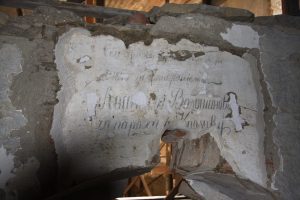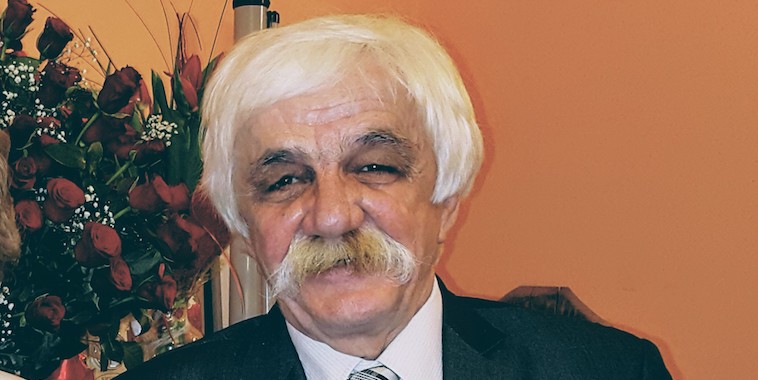Further maintenance work in Korolyk Voloskyi (Królik Wołoski/Королик Волоський)

Maintenance work has been going on in the former Greek Catholic Church of Translation of the Relics of St. Nicholas of Myra in Królik Wołoski. According to the Królik Wołoski Association, part of the polychromy has been conserved recently. The repair men took off papers from the ornament decoration below the ceiling, as well as rosette, which are to be recreated. Apart from that, they conserved the effigies of the Saints located on the southern wall of the middle part. As we read further in the announcement, open polychromy has been conserved – to be later moved to a new base. The inscription located at the altar is also interesting, being sensational at the same time. As many as three layers of inscriptions have been discovered there. The oldest of them dates back to the first half of the 19th century, 1843, i.e. the year of the church’s construction. For now, the main work is finished, but the tools and the scaffolding will stay inside – the researchers and conservators are going to continue the work. The relevant news is that, in accordance with conservators’ advice, the open polychromies are to be entered into the national register of objects of cultural heritage.
Last year we reported about the first big success of the Królik Wołoski Association. It was a restoration of a brick-built bell tower that is located on the right side in front of the church. A fundraiser was announced for this project. The restored bell tower was consecrated on the 70th anniversary of the village’s resettlement to the Soviet Ukraine. The event took place on 22 August 2015 and the bell tower was consecrated by a Greek Catholic priest and a Roman Catholic priest, together.
The Królik Wołoski Association, which initiated the action, was founded in 2009. One of its first successes was obtaining the right of property to the church complex, as well as the road to the church and the cemetery. Thanks to the fact that these properties belong to the association, its members could think about saving the church, destined (back then) to collapsing. Since then, they succeeded in securing the church from robbers by installing new doors and securing the windows. The organizers plan to restore the whole complex in the future. After the bell tower, the restoration of the church’s interior seems to be a success in the plan’s realization. The Association wishes to found a museum of sacred art of Lemkovyna in the restored church complex. The place would represent the lack of consent to the destruction of the memory of the past.
The Greek Catholic Church of Translation of the Relics of St. Nicholas of Myra in Królik Wołoski was built in 1843 in the place of the former, wooden one. The church made out of stone, covered with a two-sided roof and topped by three domes. Before World War II, the church was restored in 1923, as well as in 1930. In 1934-1947 the parish belonged to the Apostolic Exarchate of Lemkovyna. After the resettlement of Rusyns, the church functioned as a store for the local state-owned farm. In 1996 a nearby parochial cemetery was restored by the participants of a conservation camp Nadsanja, led by Stanislaw Krycinski.
More information on the work, as well as a rich photogallery, is available on the Association’s fanpage on Facebook.
The photograph above: the church in Królik; source: Wikipedia
Publikacja wyraża jedynie poglądy autora/ów i nie może być utożsamiana z oficjalnym stanowiskiem Ministra Spraw Wewnętrznych i Administracji.
Публикация выражат лем погляды автора/авторів і не може быти принимана як офіцияльне становиско Міністра Внутрішніх Справ і Адміністрациі.
Zrealizowano dzięki dotacji Ministra Spraw Wewnętrznych i Administracji.
© Copyright lem.fm, 2025. Вшыткы права застережены.






